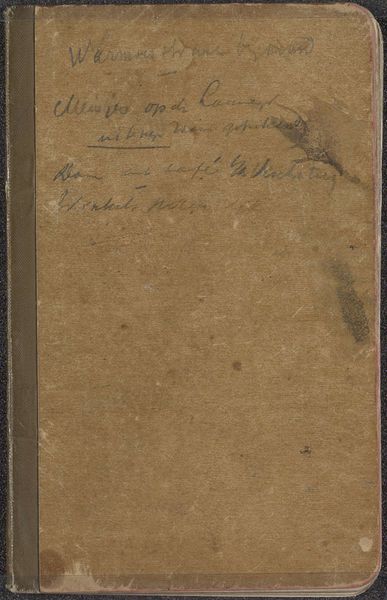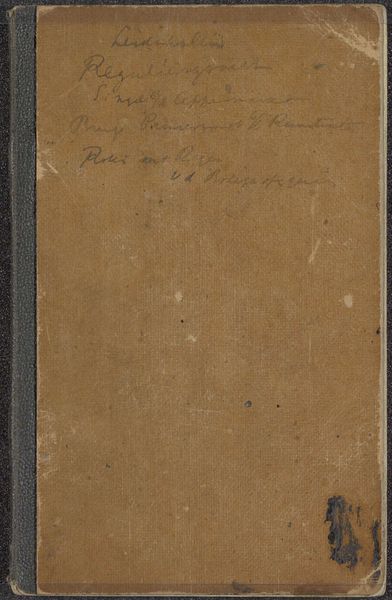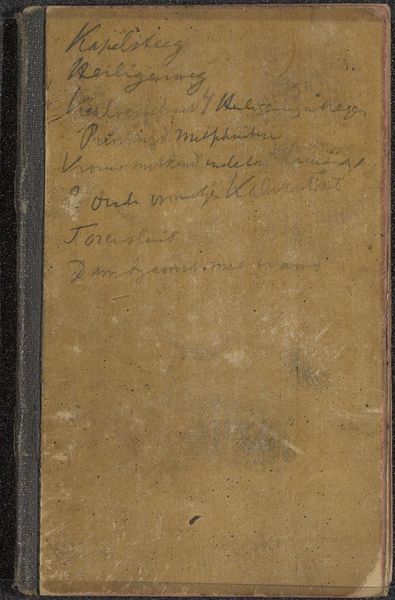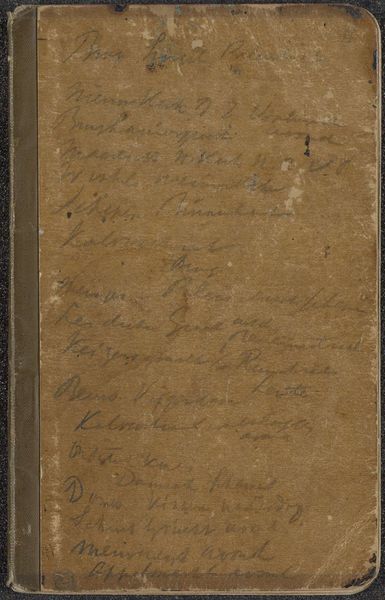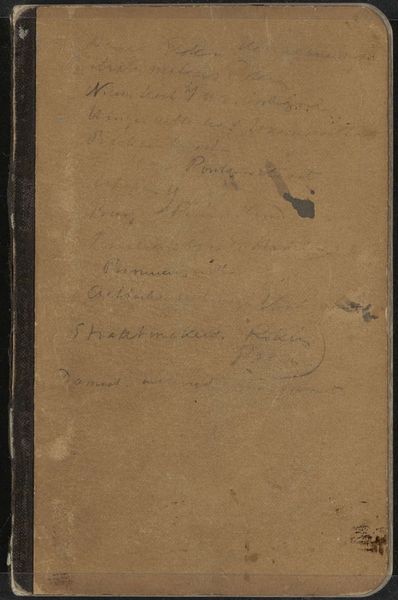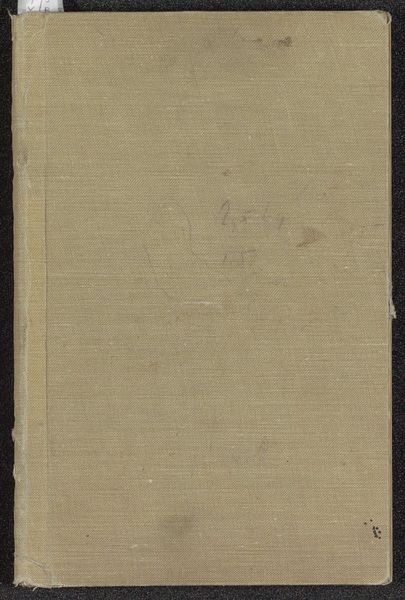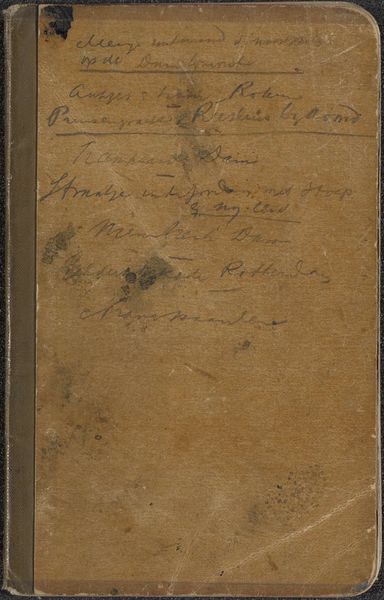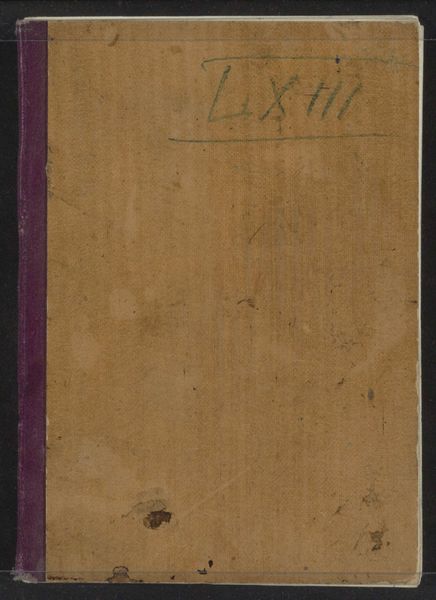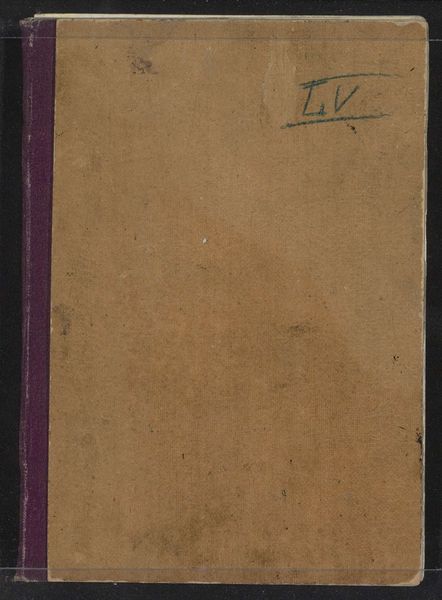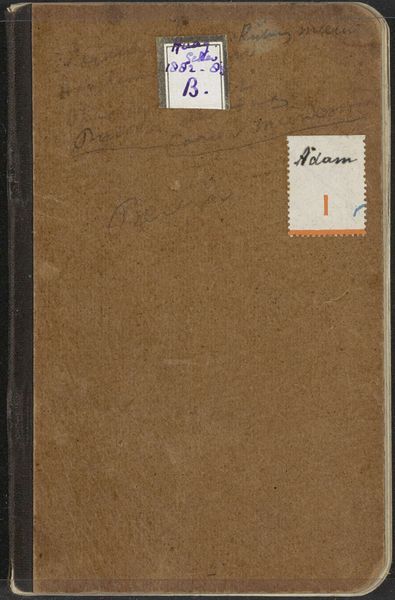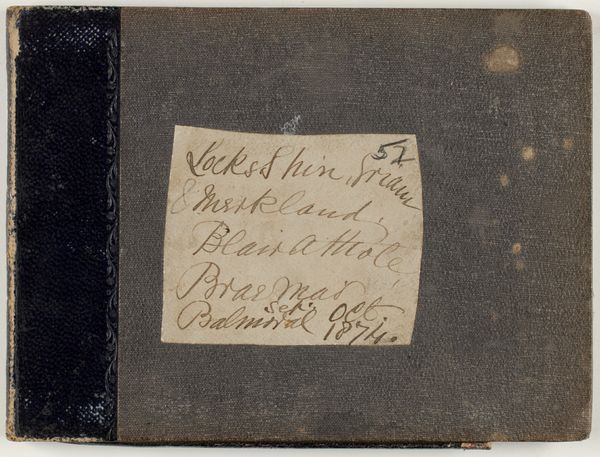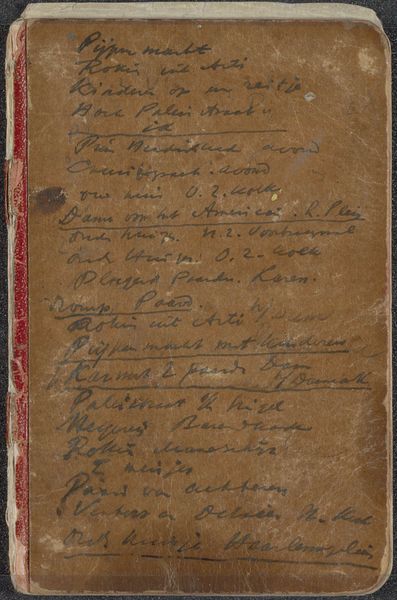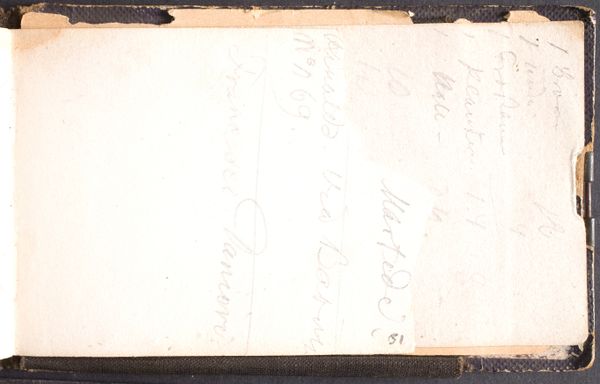
drawing, paper
#
drawing
#
water colours
#
paper
#
watercolor
Dimensions: height 162 mm, width 104 mm, thickness 7 mm, width 212 mm
Copyright: Rijks Museum: Open Domain
Curator: Before us, we have “Sketchbook with 42 leaves,” created by George Hendrik Breitner between 1898 and 1902. The book is made of drawing paper with watercolor details. It’s part of the Rijksmuseum collection. Editor: Well, just from the cover, you immediately get a sense of… use, don’t you? The wear and tear. It's aesthetically appealing to see art creation and planning that eventually becomes refined. Curator: Exactly. And Breitner was, of course, very much a street painter, an urban chronicler. So, a sketchbook like this provides valuable insights into how he captured everyday life and how his artistic perspective evolved. We understand Breitner's need to engage in a continuous record of city living, and understand his interaction with a fast paced-life on the brink of technological advancement. Editor: From a compositional point of view, it’s fascinating to see the notes scattered across the cover. Almost like a palimpsest, layering words over a worn, brownish surface. Curator: Those notes, though seemingly random, speak to the intellectual and social environment he inhabited. The list format itself points to cataloging that we understand now. Consider that each entry opens another story of Breitner's art development within our cultural system. Editor: Yes! Breitner has captured something elemental using his tools to create notes, as well as visual elements. The lack of a definite image, or defined aesthetic standard speaks to a rejection of idealized beauty and the exploration of what defines art during societal disruption. It’s rough. Curator: What’s also noteworthy is how museums and galleries display sketchbooks such as this. They show not just the finished work, but also reveal the behind-the-scenes, offering different types of engagement with artists of this era. The display becomes an intimate and transparent interaction. Editor: Looking at this piece as a material object is beautiful. Even without seeing a single one of its drawings. We sense what its existence in the public represents as a commentary, not just as artwork but about our ideas regarding aesthetics and production in a rapidly changing time period. Curator: It is that material record, Breitner's notebook as a testament to not just individual work, but also how that shapes broader cultural stories. Editor: Ultimately the texture on the outside gives so much insight to this artwork as a full piece. The viewer knows to appreciate art not just for art's sake but for the context it creates.
Comments
No comments
Be the first to comment and join the conversation on the ultimate creative platform.
